There’s a dining hall on campus that has pretty good “Meltz sandwiches,” which are grilled cheese sandwiches but fancier. Here’s a BAT Melt.
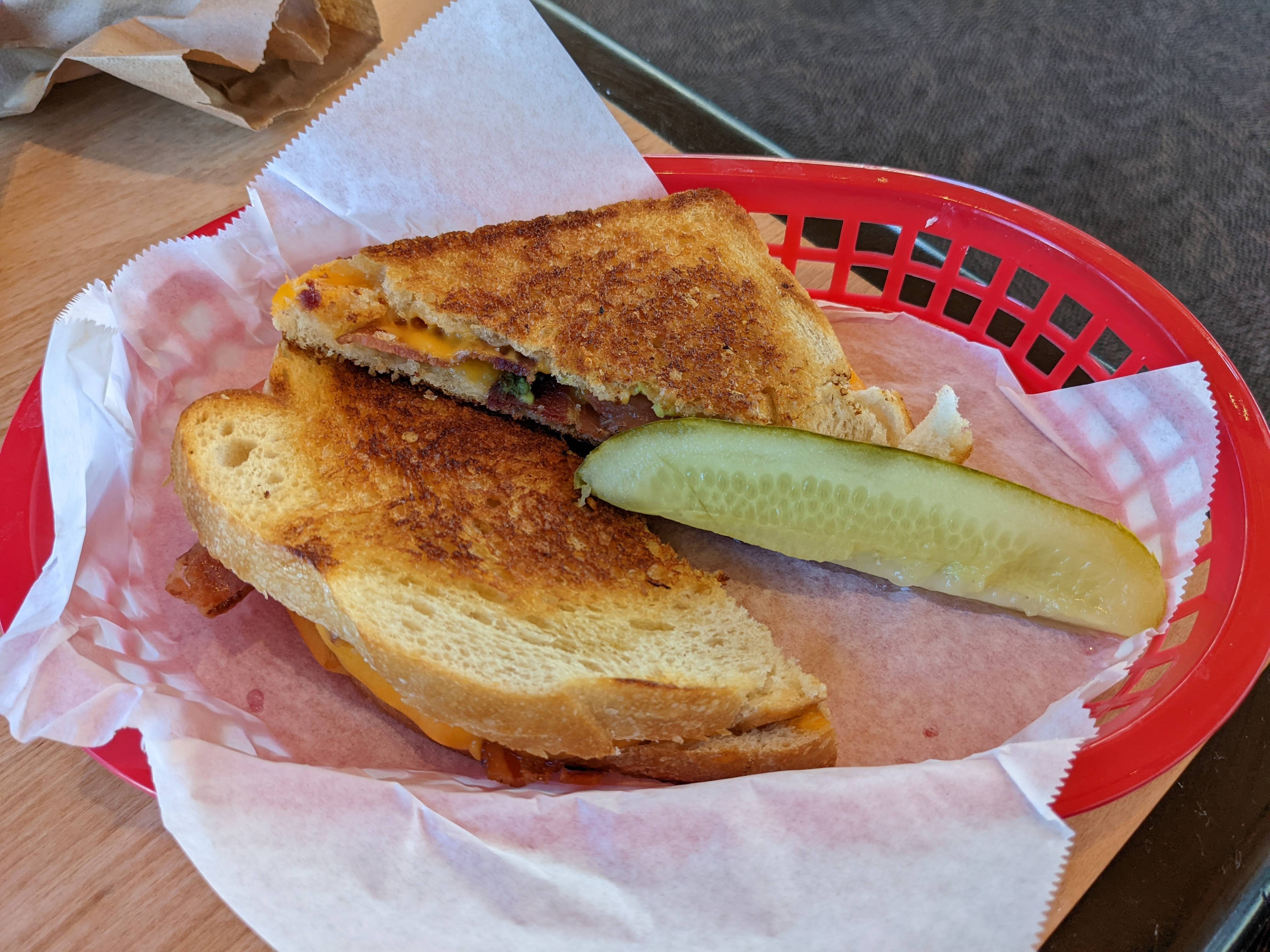
Here’s a Buffalo Chicken Melt.
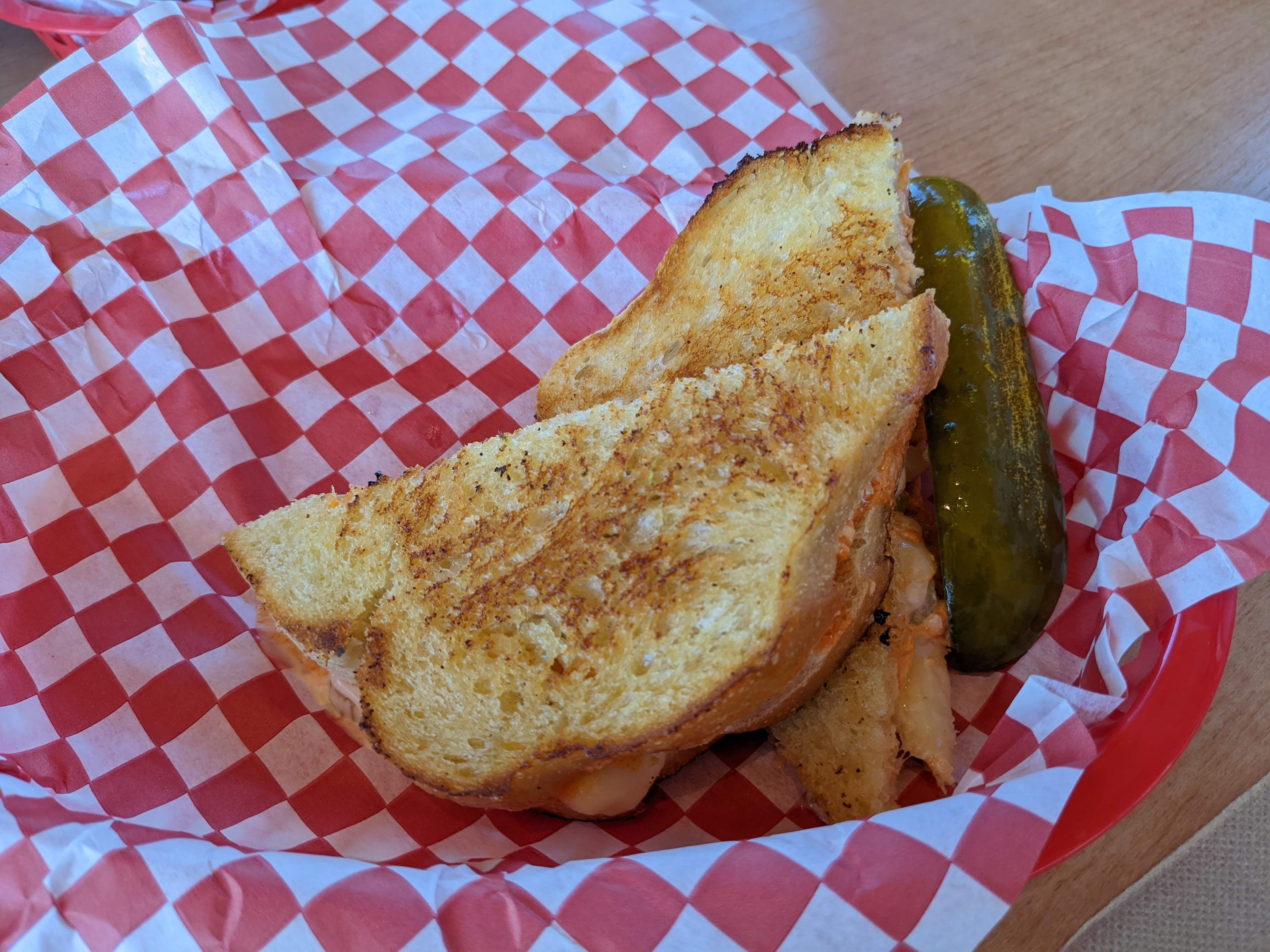
A Mac & Cheese Melt.
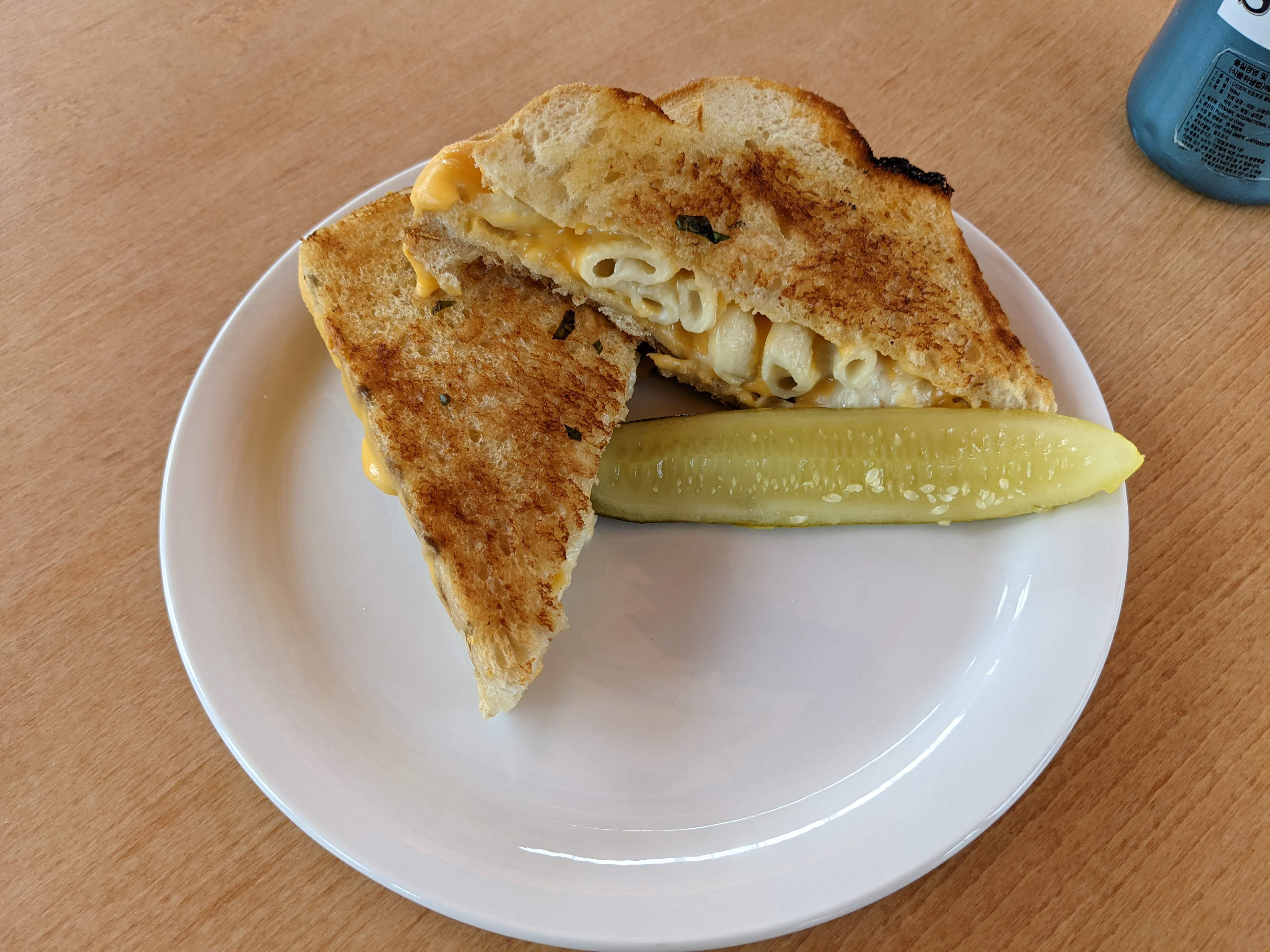
A Melter Skelter.
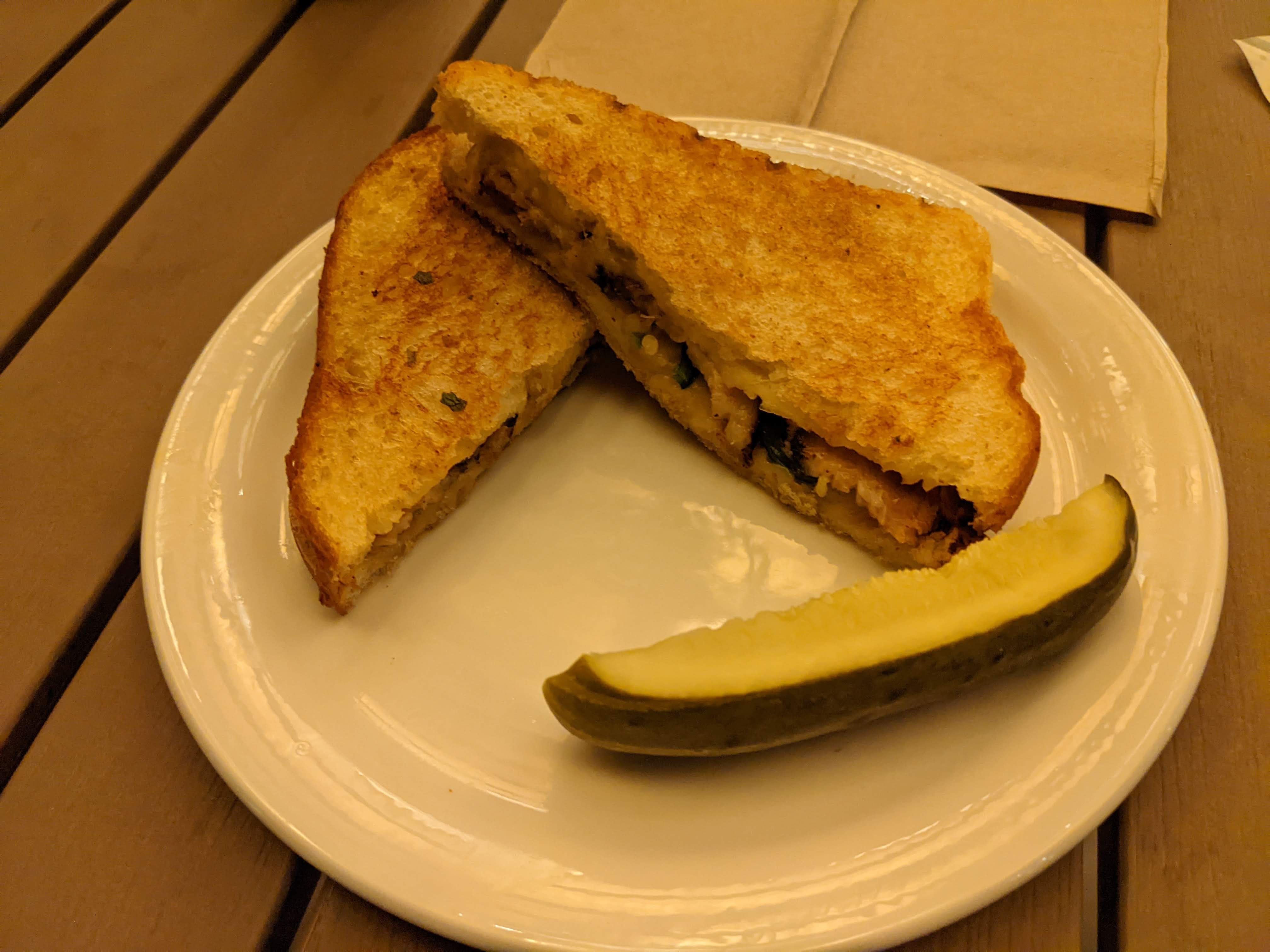
A Spicy Ham and Swiss Melt.
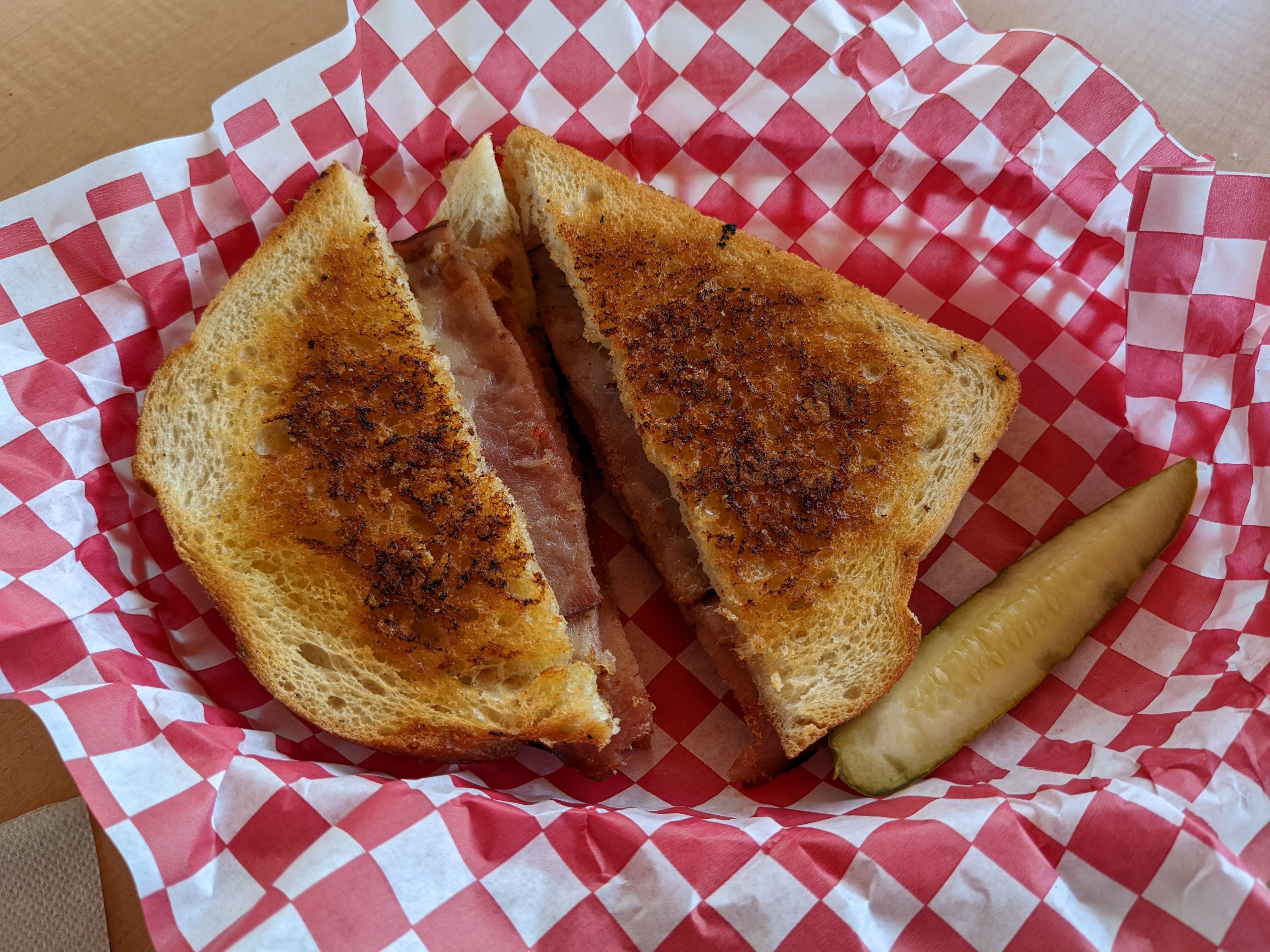
And a Turkey Apple Brie Melt.
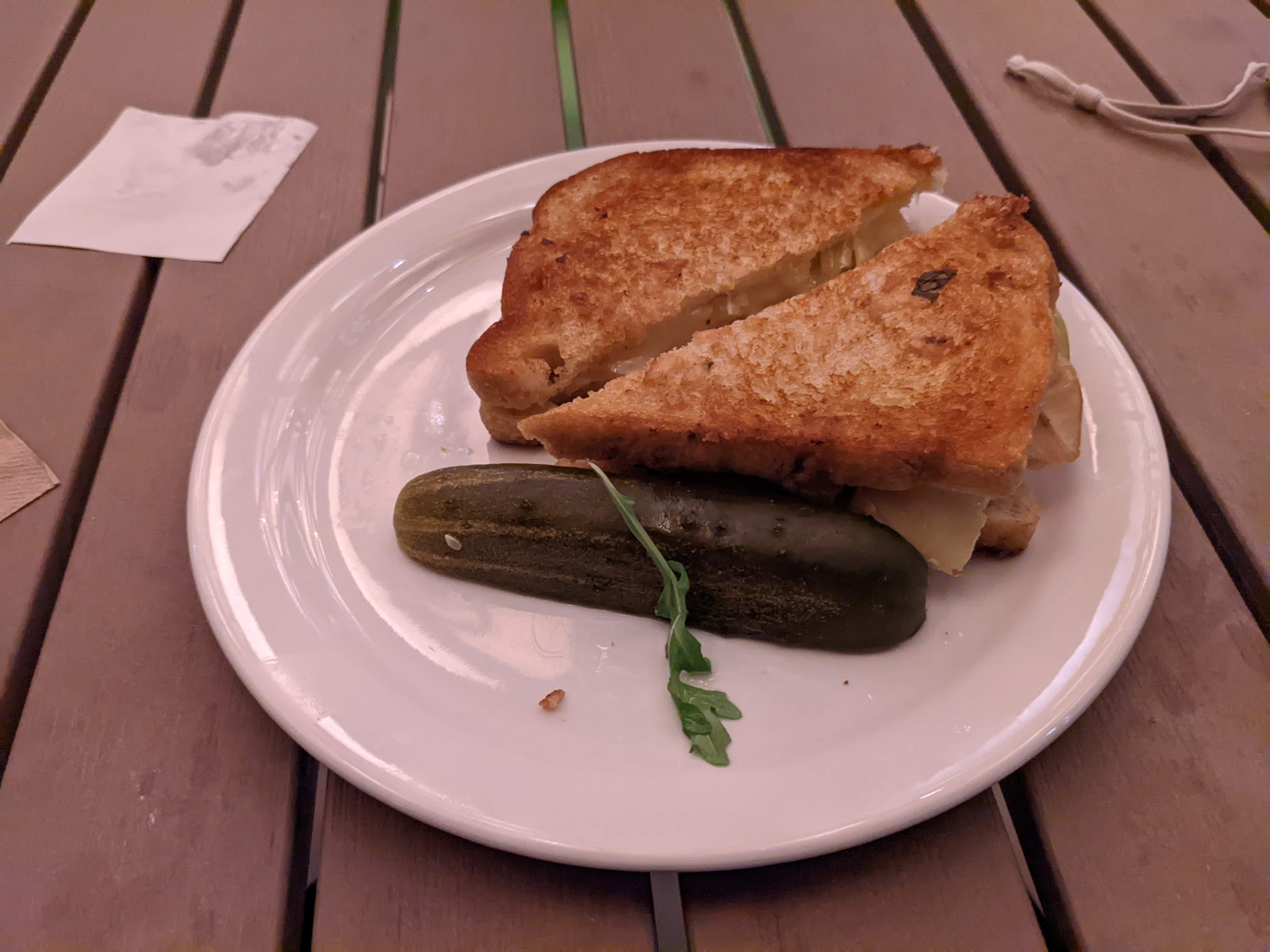
There’s also a place off campus called The Melt, which I’m pretty sure the dining hall based its sandwiches on. Here’s a Mac Daddy sandwich.
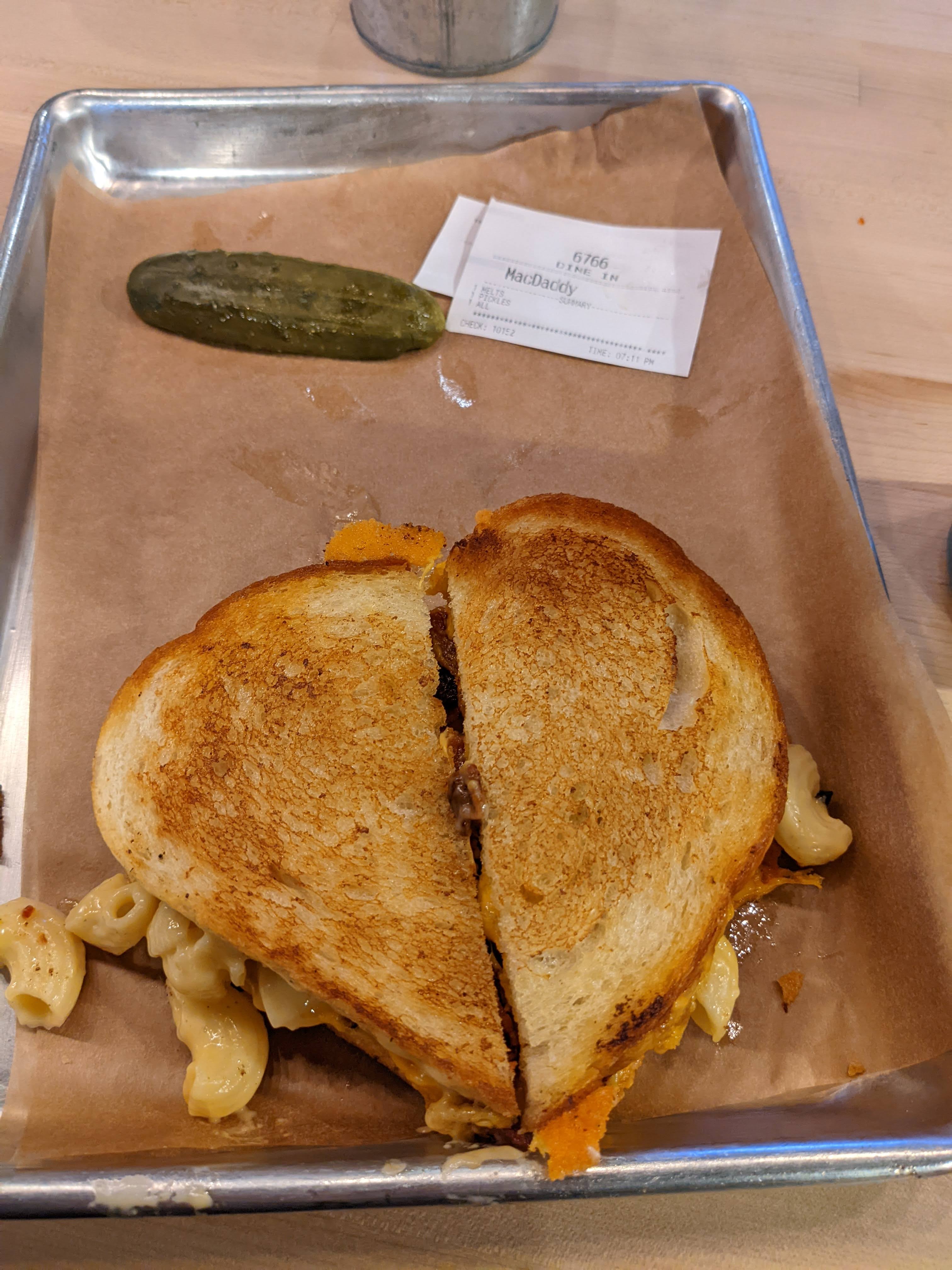
Seeing all these sandwiches, I noticed something rather peculiar about the dishes. They all come with an entire stick of pickle, cut into quarters lengthwise, delicately placed separately from the sandwich itself. I was a bit confused about the pickles. Was I expected to eat it directly? I’ve never seen these style of sandwiches before, perhaps because my family rarely ate outside.
How are you supposed to eat the pickle? What is the pickle for?
This pickle question has come up several times in my friend group because I’ve never gotten a satisfactory answer about the pickles. One of my friends in particular has been very critical of my question, so this article is addressed specifically to them. They say, you’re just supposed to the eat the pickle. But that doesn’t explain how nor why.
The pickle.
The pickle itself is an odd addition. Our dining halls seldom give out sides so freely like this. They’re served a la carte, not buffet style, so we have to order and pay for each item we want individually. Usually, sides like French fries, fruit, or fountain drinks must be ordered separately. I would’ve expected the pickle, mentioned nowhere in the dish’s description, to be a separate side listed in the menu like all other sides.
Perhaps the sandwiches normally have pickles in them, but because so many people don’t like pickles, they put it separately to allow people who like pickles to put it in their sandwich. This still feels like a waste—the pickle gets thrown away anyways—and inconsistent with burgers, which come with pickles in the sandwich by default. Our mobile ordering app is certainly capable of letting people opt out of pickles. More importantly, though, that doesn’t explain how the pickle is supposed to supplement the sandwich. It’s one thick and long block of pickle, and the sandwich has melted cheese. Is one supposed to peel the sandwich apart, shove the pickle into the sandwich, then press it back together?
Personally, I was fine with eating the pickle on its own, but this amount of pickle on its own tastes a bit weird. The sandwiches taste fine without the pickle. There was no need for the dining halls1 to go above and beyond to add a pickle when they are so lackluster in other areas.
I didn’t see any harm in emailing the department in charge of campus dining, so I sent them an email.
Subject: Pickles
Hello,
A few weeks ago, I ate the melt sandwiches from Cafe V. They were very good, but each melt sandwich included a lone quarter pickle (lengthwise) on the plate.
I would like to know what the pickle is for.
Thanks,
Sean
They replied the next day.
Hello,
Thank you for reaching out. The pickle is just a side or garnish to compliment the dish.
Dining Engagement
This did not answer anything. So the pickle is a side, sure, but how are we supposed to eat it?
To my friends, apparently this is obvious. You just eat the pickle with the sandwich. That’s it.
But the act of eating is not that simple. Sure, anyone is free to eat food any way they like. You could eat a burger one layer at a time, or spaghetti with your fingers, but we have common and culturally established ways of eating food. Due to a lack of experience, I just don’t know what the norms would be for these pickles.
And while people are confident that everyone knows how to eat a pickle with the sandwich, they disagree on the specifics. Here is a poll I conducted for when people eat the pickle relative to the sandwich.
You are at Cafe V and ordered a melt sandwich. They provide an entire quarter pickle spear with your sandwich. How do you eat the pickle?
- Do not eat the pickle. Throw it away. (3 votes)
- Eat the pickle before the sandwich. (5 votes)
- Eat half the sandwich, eat the pickle, then finish the sandwich. (1 vote)
- Eat the sandwich then eat the pickle. (1 vote)
- Take a bite of the sandwich, then take a bite of the pickle, and repeat. (1 vote)
- Insert the pickle inside the sandwich and eat the sandwich. (1 vote)
It’s no surprise that not everyone ate the pickle the same way, though I wasn’t expecting so much diversity: each option had at least one vote. However, to a few people, it was a shocking revelation that some people ate the pickle whole. They insisted that you’re supposed to eat the pickle while eating the sandwich.
And what, exactly, does “while” mean? Is it with alternating bites? Do you keep the pickle and the sandwich bites in your mouth at the same time, so they mix in your mouth as if the pickle were originally embedded in the sandwich? Or do you swallow the sandwich bite, then cleanse your mouth with the pickle to experience the next bite anew? Or do you put the sandwich and pickle together, perhaps on top or stuffed inside the sandwich, then chomp both simultaneously?
More importantly, why do you expect everyone to know this? Nothing about the sandwich and the pickle on the plate or tray suggests it has to be eaten together. Pickles aren’t prevalent in many cultures, so this sort of expectation is culturally ignorant.
The phrase “eat this with that” is also vague. Eating a burger with fries is very different from eating cereal with milk. I’d like to see you pouring fries into your burger or drinking the milk after eating the cereal dry.
But this shouldn’t come as a surprise. There are activities where you follow someone’s instructions in front of them, such as making a PB&J sandwich, and intentionally misinterpret any ambiguity or assumption made. They show that people are notoriously bad at describing the specifics of what they know or imagine in their head because it can be hard for people to understand what others know or don’t know.
It’s not just the pickles.
I think what irritates me most isn’t the pickles themselves but rather how my question was received. It’s why the pickles get brought up so often in my friend group. I haven’t yet received a satisfactory answer, but other people don’t seem very keen on finding out. The dedicatee of this article regularly reprimands me because the answer seems obvious to them, but when I try to dig deeper, they couldn’t give a good explanation on why the pickle is there. They don’t know and don’t care, to the point where they believe it should not be discussed at all.
Isn’t this scary? Shutting down a question just because it doesn’t matter, or because it is not what one expects a “normal” conversation should be. Especially as university students, why are we rejecting curiosity?
Is it because you are afraid of not knowing the answer, of getting a question wrong? Does wondering about how the world works now only remind you of exams and quizzes?
It’s not a bad conversation topic either. It’s certainly better than directionless arguments about politics and other drama. Not every conversation needs to be productive.
To me, this rejection of wonder and curiosity seems to be a common trend among my peers, and it feels like a symptom of maturity and growing up. During childhood, we would run around, exploring all the cool things in the world and ceaselessly asking what they’re for, why they’re there. As we grow up, we start to learn enough that it becomes expected that you know what everyone else knows. Now, in the adult world, if you don’t know something, you could potentially be met with something dismissive and derivsive, along the lines of “How did you not know that already?” We passively yet actively shut down curiosity this way.
Some people look forward to maturity and praise it as a good thing, and I do too: it’s good to celebrate progress in life. Yet I also see it as the end of a once-in-a-lifetime, exciting, innocent moment of life before decades of monotonous adult work life. I see the cessation of curiosity about the little things in life as a reminder that we are now at the beginning of our long trudge towards death. It’s only downhill from here: you’ll never be this curious for the rest of your life.
Anyways, I just think it’s pretty rude and sad that you don’t care about how a pickle should be eaten with a sandwich. Your mind has turned into stone, no longer interested in what makes the world interesting, and life is now just a chore to you.
-
The dining halls are usually very frugal. Despite selling low portions of food for high prices, our campus’s dining halls still run at a loss. ↩